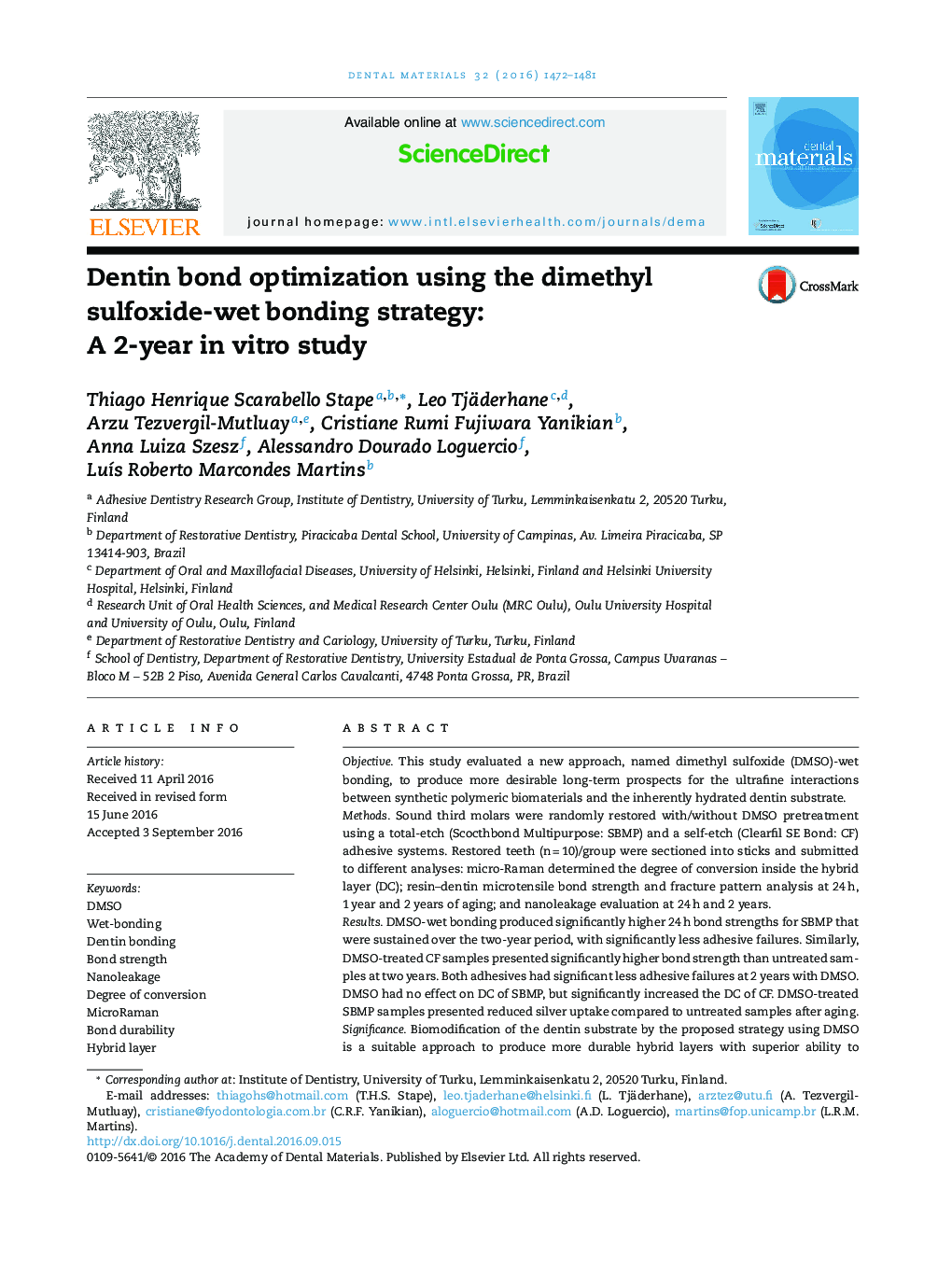| کد مقاله | کد نشریه | سال انتشار | مقاله انگلیسی | نسخه تمام متن |
|---|---|---|---|---|
| 5433128 | 1398054 | 2016 | 10 صفحه PDF | دانلود رایگان |
- A new wet-bonding technique using DMSO is proposed.
- The mechanism relies on DMSO displacing free water from dentin.
- This increases bond strength of etch-and-rinse and self-etch adhesives even after aging.
- Formation of hybrid layers with higher hydrolytic stability and reduced nanoleakage.
- DMSO-saturated dentin benefits the degree of conversion of self-etch adhesives.
ObjectiveThis study evaluated a new approach, named dimethyl sulfoxide (DMSO)-wet bonding, to produce more desirable long-term prospects for the ultrafine interactions between synthetic polymeric biomaterials and the inherently hydrated dentin substrate.MethodsSound third molars were randomly restored with/without DMSO pretreatment using a total-etch (Scocthbond Multipurpose: SBMP) and a self-etch (Clearfil SE Bond: CF) adhesive systems. Restored teeth (n = 10)/group were sectioned into sticks and submitted to different analyses: micro-Raman determined the degree of conversion inside the hybrid layer (DC); resin-dentin microtensile bond strength and fracture pattern analysis at 24 h, 1 year and 2 years of aging; and nanoleakage evaluation at 24 h and 2 years.ResultsDMSO-wet bonding produced significantly higher 24 h bond strengths for SBMP that were sustained over the two-year period, with significantly less adhesive failures. Similarly, DMSO-treated CF samples presented significantly higher bond strength than untreated samples at two years. Both adhesives had significant less adhesive failures at 2 years with DMSO. DMSO had no effect on DC of SBMP, but significantly increased the DC of CF. DMSO-treated SBMP samples presented reduced silver uptake compared to untreated samples after aging.SignificanceBiomodification of the dentin substrate by the proposed strategy using DMSO is a suitable approach to produce more durable hybrid layers with superior ability to withstand hydrolytic degradation over time. Although the active role of DMSO on dentin bond improvement may vary according to monomer composition, its use seems to be effective on both self-etch and etch-and-rinse bonding mechanisms.
152
Journal: Dental Materials - Volume 32, Issue 12, December 2016, Pages 1472-1481
